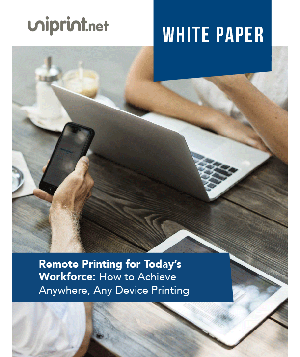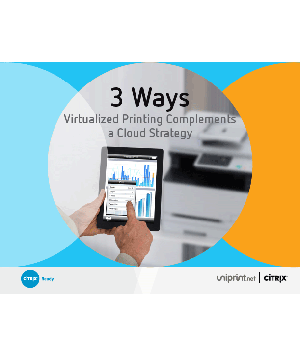Printing Challenges in a Virtualized & Cloud Environment
Arron Fu, CIO of UniPrint.net, explains what can be done to overcome the printing challenges in a virtualised and cloud-based environment
Innovations including server-based computing, virtual desktop and cloud computing have, over time, put IT departments on the back foot, often leaving them struggling to meet the associated printing challenges.
Life was easier with Windows, with the provisioning of a printer driver on the client machine and a printer connection. This was further simplified with a common interface or specific language per printer manufacturer. All that uniformity is in the past and IT departments now support hundreds of desktops from one virtualised server with thousands of drivers installed on the application server, creating multiple incompatibility issues. The drivers are resource intensive and printer mapping challenges IT administrators, whilst rogue printers can cause servers to crash. In short, the one-to-one, printer-to-driver model is outmoded in the virtualised world.
This is compounded further when you consider that bandwidth issues are appearing in all major adoptions of VDI. Printer drivers are not, by their very nature, designed to be bandwidth friendly. Often, with lower end typically cheaper printers, the drivers tend to be especially large and cumbersome, manifesting in extraordinarily slow printing speeds, especially in remote offices.
Global insurance brokerage firm Lockton has a data centre in London and they experienced just how painful bandwidth limitations can be in regional locations when using their new VMware and Citrix XenDesktop environment. Working across a WAN, several regional offices experienced slow printing due to bandwidth demands when transferring print data to and from their London data centre, the home of their consolidated print servers.
Security of print data is also a concern, especially in verticals such as finance, healthcare and law. Without a central print audit and archiving capability, how can IT departments control who prints what to where? This is even more pertinent with personal devices in the workplace.
All of this can be solved by introducing printer driver standardisation, meaning that Universal Print Driver (UPD) technology has come of age, making adoption essential in server-centric and virtualised desktop environments. Acting as the converting and compressing engine, a UPD seamlessly converts print jobs into a much smaller PDF file to send to client machines. In the case of Lockton it solved their printing pain in an instant, optimising network bandwidth and speeding up all their print jobs.
But not all UPDs are created equal and testing is recommended, as well as considering solutions that go beyond traditional UPD functionality. Innovations like Virtual Print Queues (VPQs) from within a UPD look likely to set the new standard for printing on demand in cloud and Software-as-a-Service environments, where the issues of location-based printing and print security are significant.
A well architected VPQ allows print jobs to be securely held in a designated network location and released to a designated printer upon user authentication. VPQs mean that IT administrators need only manage one print queue and can centrally map gateway printers to the printing appliance by user, user group, location, or geographical area. For the user, the VPQ becomes their personal print queue, and typically they can authenticate by entering a PIN or by tapping their identity card on the network printing appliance, which displays their list of print jobs, making it easy to select a print job and printer for immediate output and secure retrieval.
This approach simplifies management for IT using one UPD and one VPQ across the enterprise, regardless of the number and distribution of users or the size and distribution of the printer estate. In addition, a multi-purpose network print appliance can itself act as a remote print server, offering print stream compression capability, thereby eliminating remote server support and slow remote printing issues.
















